Exercising Feminine Power - Maternity Figures in Traditional African Art
PRIMITIVE - Thursday, May 11, 2017By Glen Joffe
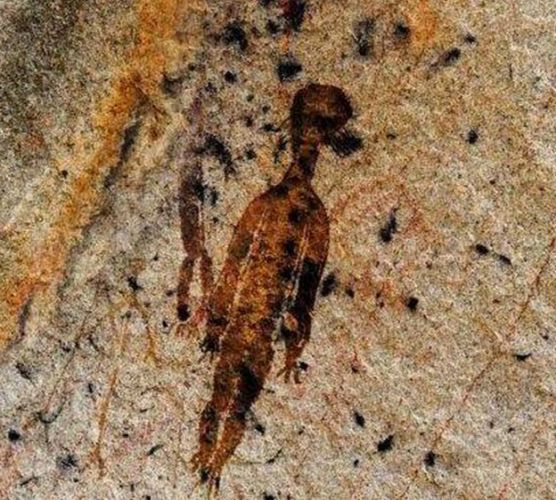 |
|
In the year 35,000 BCE – or sometime around that time – a couple huddled together in a cave located in present day Africa. They spoke in more than grunts and simple gestures. Ultimately, their language became lost in time just like the language of many who would come after their departure. Nonetheless, in the present they had made as good a life for themselves as any other homo sapiens on the planet. They had also made a satisfactory home. The cave was large and although they were not the only inhabitants, their space afforded them some privacy. Located in a large natural alcove near the main entrance, it also illustrated they had gained some status among the rest of the occupants. Perhaps the male was a good hunter; the female handy when it came to crafting hides and other materials into garments and useful utensils. Maybe they had just lasted longer than their neighbors. Back then, longevity was valued. So was experience.
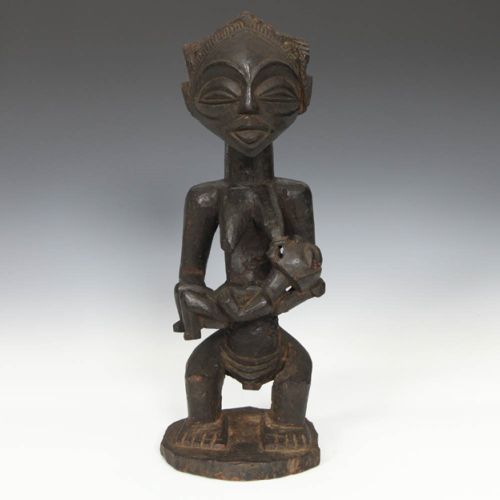 |
|
One evening, as twilight receded into darkness, the male built a fire in the center of their space. Wood that had been drying lined one wall and in a stone bowl was hair and small chips of bark and wood used for kindling. He rolled a long stick with the point pinned to a small amount of hair and kindling, and blew gently until the kindling started to smoke and erupt into a small flame. Gradually, he built a campfire. As the flame increased in size he could see the carcass of a small animal he had hunted earlier. Dinner was on the docket. Nearby was the female, nursing an infant child. The male felt a renewed sense of responsibility ever since the child was born and the female survived the rigors of childbirth. He was grateful, for he knew luck played a role in the survival of mother and child. As the male fed the fire, it further illuminated what was going on in their space, and upon closer examination he realized all was neither good nor safe.
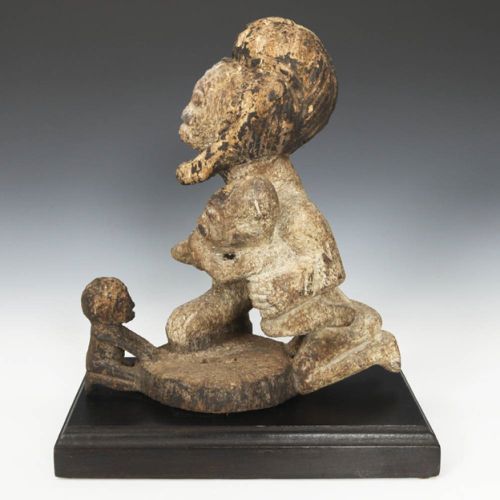 |
|
Against a far wall he saw the glint of eyes that did not belong to anyone – or anything – welcome in his “household.” A giant boar, as large as himself lay in wait against the side of the cave, presumably until the time was right for an attack. The boar’s tusks, curved and pointed by rubbing against rocks were as sharp as any knife and could do immeasurable damage with just one thrust. In this world, just as many people had been killed by boars as the opposite. In every regard, the creature was a worthy adversary. Discovered, the boar rushed the male. With no time to think he kicked the fire into the boar’s face, which halted for just a second, shook its head and sidestepped to get a better angle of attack. In that moment the female shrieked, the infant buried its head further in her chest, and in an instinctual reactionary moment fueled by fear, she flung a wooden club toward the male. In one fell swoop he grabbed the club and swung it with all the force he could muster, connecting with the animal right between the eyes.
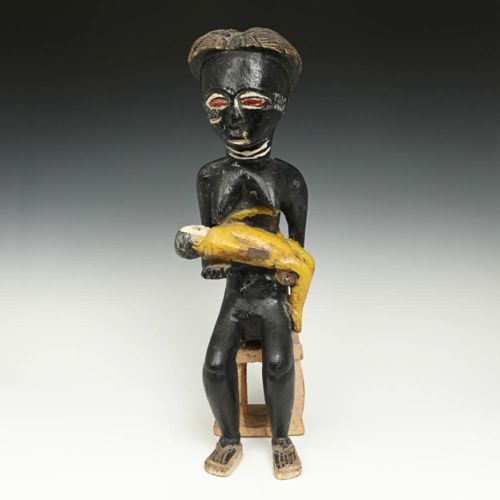 |
|
The boar dropped to the ground, grunted weakly, took just a few more breaths and then perished. The entire episode took only seconds. The commotion did not go unnoticed by any of their neighbors in the cave. Soon other families were gathered around; males examining the kill and females offering nurturing words and gestures to all the parties involved. When everyone’s adrenaline subsided, the boar was butchered and cooked; and the cave dwellers were each given a fair share to eat. Ultimately, this incident became legendary. It was discussed frequently among inhabitants of the cave and even commemorated by an artist who decorated the cave walls with depictions of what had ensued “the night the boar attacked.” Yet, when it came time to depict the event using charcoal mixed with animal fat and pigmented with red ochre and blood, the boar was nowhere to be seen. Instead, the mother was shown with her child. The entire concept of fertility, motherhood, family, and nurturing was deemed more important than the picture of a boar being killed. Mothers and children – indeed, the entire concept of maternity- became revealed as a universal theme; and nowhere did this theme become more prevalent than in the art found across the African continent.
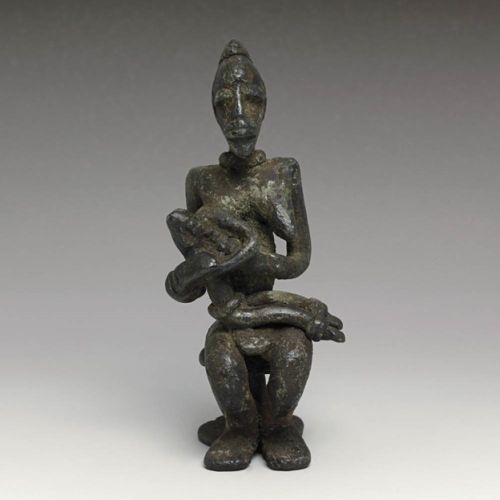 |
|
In traditional African art, which generally refers to the art of sub-Saharan Africa, the concept of motherhood and maternity is a theme surfacing in just about every tribal group. Although most societies in Africa could be viewed as paternalistic or male dominated, artfully rendered maternity figures idealizing and glorifying women were commonplace. Yet, the purpose of this art was not simply to glorify women. As a genre of traditional African art, maternity figures relate to themes of continuity, fertility, the promise of future generations, spiritual and regenerative powers, and the capacity to nurture everyone from the individual to the society at large. These themes were represented by depictions of the female form most frequently shown with a young child, but they were themes that had relevance to men and women alike.
For example, one standing maternity figure from the Luba people found in PRIMITIVE’s collection of traditional African art shows a child suckling a mother’s breast. Although this type of sculpture is found throughout traditional African art, in the case of the Luba it very likely refers to the power and authority of the king as much as the traditional power of women, since women were considered essential to Luba politics and a tremendous amount of Luba art refers to “kingship” and concepts of leadership. The Luba explicitly state “kingship is a woman,” which at first blush may appear to be a contradiction, but is actually a reference to female traits required for successful leadership. Consequently, one can interpret this statue as a reference to the king’s ability and obligation to manifest behavior illustrated by the maternity figure to help insure Luba society is nurtured, grows, and prospers.
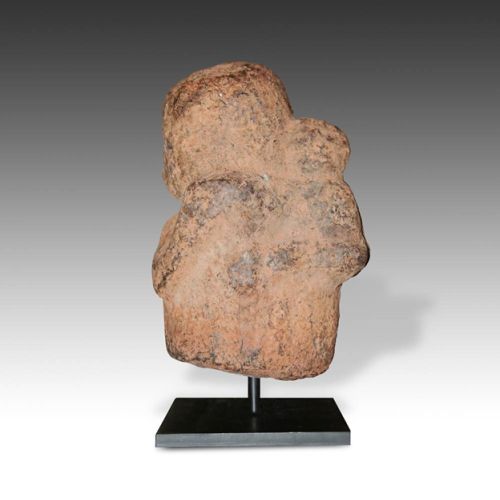 |
|
In the collection of traditional African art found at PRIMITIVE, many maternity figures can be found; so many, the concept of maternity readily makes itself known as a standard theme among just about every tribal group. Typically, this theme is depicted three-dimensionally in the form of figurative sculpture, often times called maternity figures, and these sculptures frequently have more than symbolic use. For example, in PRIMITIVE’s collection of traditional African art is a maternity figure in the form of a staff top from the Punu people in Gabon, central Africa. The Punu are famous for white faced masks idealizing feminine beauty called Mukudj. Click here to read more about Mukudj masks in the blog entitled Beauty Beyond the Eye of the Beholder – Punu Mukudj Masks. Statuary from this group is much rarer. Like the Mukudj masks, Punu statuary was created by master carvers who were male and had gone through special initiation rites within a men’s secret society called the mwiri. Although the art they created was used more by males than females, it does not matter who carried this staff. The object itself still conveyed all the nuances of the maternity theme as represented in the form of a maternity figure.
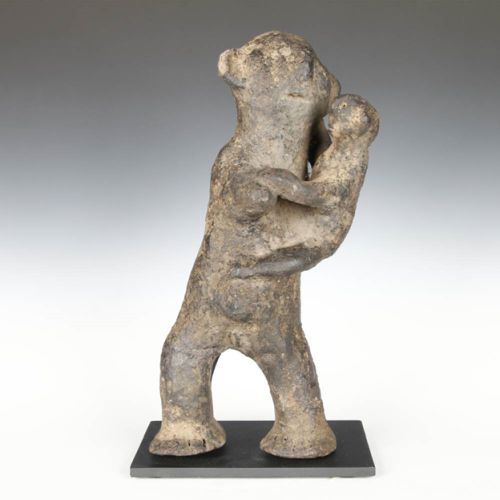 |
|
Another piece in PRIMITIVE’s collection of traditional African art is a Spirit Spouse in the form of a maternity figure from the Baule people, who reside in the Ivory Coast of West Africa. The figure depicts a mother holding a child who is presumably preparing to suckle. This piece is not a masterpiece or tour de force of carving, but it is highly relevant to this discussion. The Baule people believe there is an alternate world running parallel to the world of the living where each of us has a spirit spouse who can be called upon to help cure problems in the physical world. When called upon, the spirit spouse materializes as an effigy, a smaller painted wooden statue that must be cared for in the same manner as a physical mate. After the problem causing its creation dissipates, the spirit spouse is then released from its obligation. No one can say with certainty why this specific spirit spouse was created. Was it trouble conceiving a child? Perhaps it had to do with establishing a nurturing relationship? Maybe it related to carrying on a family lineage? Whatever the reason for its creation, it’s certain the maternity theme was at its core.
Most people, when they think of traditional African art conjure images of wood statuary and masks; but the history of Africa is written in three other materials: stone, terra cotta, and bronze. At PRIMITIVE, we often say those three materials have one thing in common: they are the earth, for the earth is made of stone, clay and iron ore. Consequently, these are materials where you tend to find older, more historical pieces. While PRIMITIVE presents large collections of wooden traditional African art, there are also collections of traditional African art composed of stone, terra cotta and bronze; and in each of these materials one can find maternity figures. Examples include numerous miniature African bronzes, an often overlooked category in the collecting of African art; stone maternity figures from the Grasslands of Cameroon in West Africa; and many terra cotta figures such as fetishes crafted by the Makonde people in Tanzania, East Africa. The diversity of these pieces, which always depict a mother with child, reinforces once again the universality of the maternity theme.
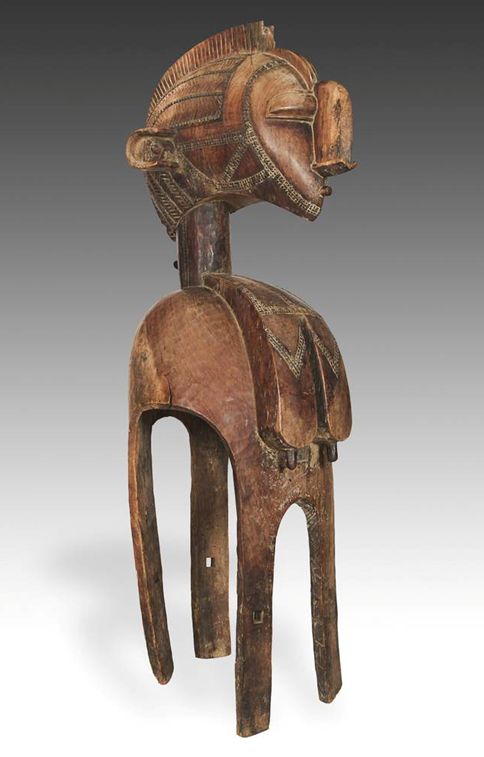 |
|
However, not all statues related to the maternity theme illustrate mother and child. For example, two of the most notable pieces in PRIMITIVE’s collection of traditional African art are from the Baga people in Guinea, West Africa. Called Nimba, this type of statue actually represents a “body mask” and is carried by one or more dancers, their role hidden by a full raffia costume. The Nimba, now considered a classical form of traditional African art, does not illustrate the female form with child, but rather, an abstracted individual female meant to idealize the feminine role in society. Its large beak and breasts symbolize feminine power, protection, and fertility. The Nimba is used in ceremonies meant to enhance the fertility of the fields, as the mask itself is viewed as representing a female deity of abundance. Yet, it has also been linked to the protection of pregnant woman and all those embracing the concept of maternity and motherhood. Consequently, it might also be viewed as a form of maternity figure.
In examining traditional African art as a collecting category, one is immediately struck by the figurative nature of most of the art, and how females are commonly represented whether in abstract or more representational forms. Whereas sculptures depicting males tend to illustrate concepts related to power, strength, and even aggression; female images commonly illustrate reverence for women, idealized beauty, motherhood, and most importantly, themes of maternity related to healing, fertility, growth, and finally, feminine power. So prevalent and important are the appearance of maternity figures in traditional African art, one can consider them a sub-category of traditional African art; and in turn, a springboard for the examination and discussion of the maternity theme and maternity figures created since the dawn of humankind across different art categories altogether.